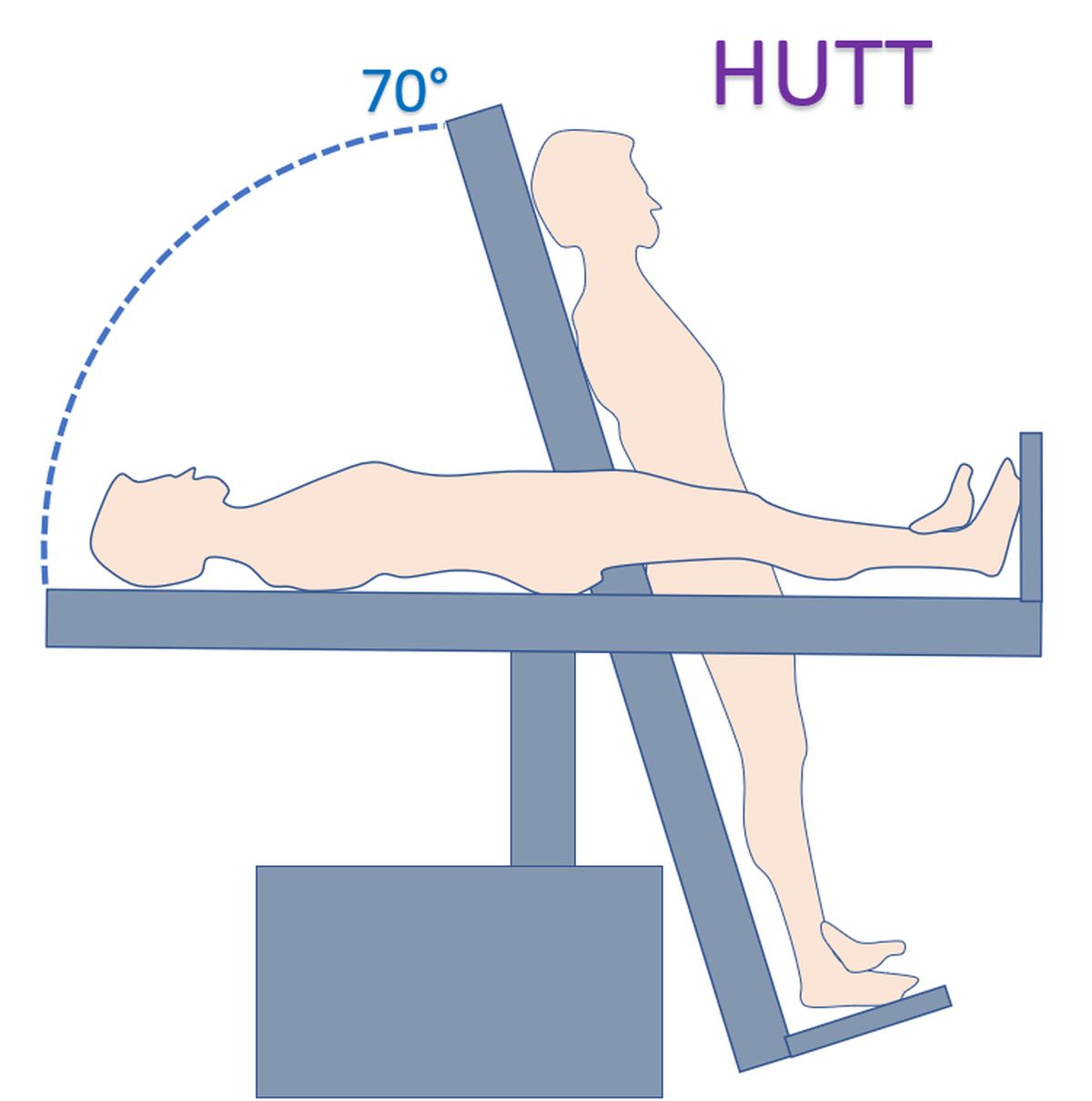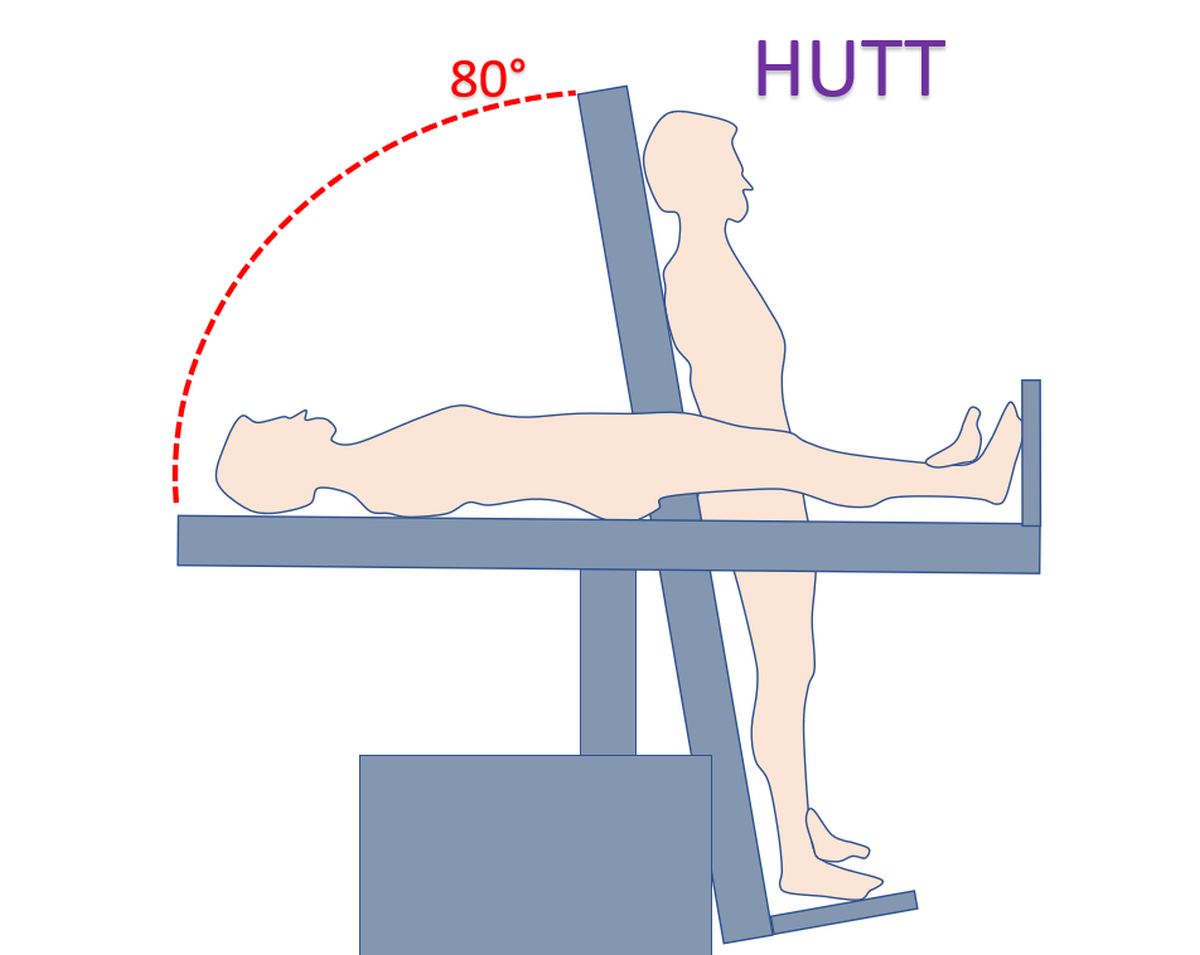What is head up tilt test (HUTT)?
What is head up tilt test (HUTT)?
എന്താണ് ഹെഡ് അപ്പ് ടിൽറ്റ് ടെസ്റ്റ് (HUTT)?
Head up tilt test, known as HUTT or tilt table test is commonly done for the evaluation of recurrent episodes of fainting or dizziness with no other evident cause. Change in heart rate and blood pressure on assuming the erect posture is monitored in this test. It is also useful in the evaluation of postural orthostatic tachycardia syndrome (POTS), a condition in which the heart rate increases on standing up. Various protocols are followed in different centres for HUTT.

One protocol is as follows: The subject is strapped to the tilt table and heart rate and blood pressure monitors connected. Ideally a beat-to-beat finger blood pressure monitoring device is to be used, though it is not available always and is more expensive than the usual blood pressure monitoring equipment. Usual blood pressure monitoring equipment cannot provide a beat-to-beat change in blood pressure and may be difficult to use if the person faints.
Infusion pump to give medications at an accurate rate through the blood vessels of the arm is set up in the beginning, to be used if needed. ECG, oxygen saturation measured by pulse oximetry and blood pressure are charted at regular intervals during the test. All emergency medications, emergency equipment and personnel are ready for managing any emergency.
In the first phase of the test, the person lies down flat for 30 minutes. This is followed by a tilt phase of 20 minutes at an angle of 70 degrees. If fainting does not occur during the period, the tilt table is brought to the horizontal position for 10 minutes.
After that, a medication which can increase the heart rate and force of contraction of the heart is infused at the starting dose and the drip is run for 10 minutes, with the table tilted to 80 degrees. Still if the fainting does not occur within 10 minutes, the table is brought back to the horizontal position for 10 minutes.

The test is repeated at two higher doses of the medication with intervening 10 minutes in the horizontal position, if needed. If no fainting occurs even with the higher doses of the medication, the test is considered negative.
Fainting can occur at any of the above stages with either a slow heart rate, fall in blood pressure or both. Strapping of the person to the table prevents a fall and injury if the person faints. There are some experts who feel that head up tilt test is not useful and should be abolished! Those with severe obstructions to heart valves and severe narrowing of the blood vessels of the heart are not taken up for the test.


